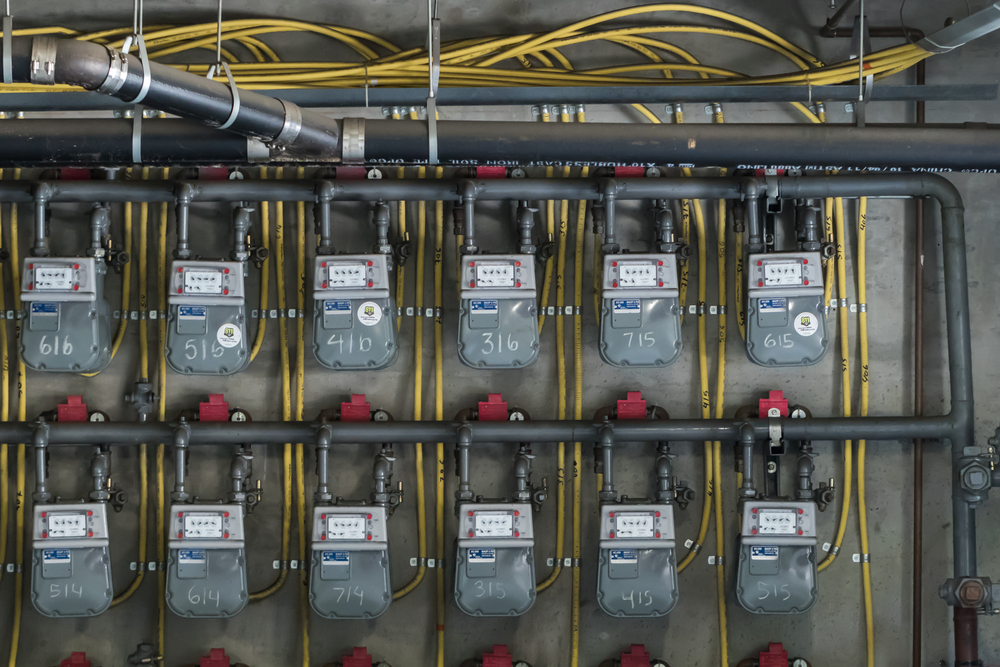The sustainability framework that leading retail property owner, operator and developer Macerich operates under calls for eliminating energy waste and nearly eliminating emissions, water waste and landfill impact. Evidence of Macerich’s success in translating these “Innovating to Zero” principles into best practices includes a No. 1 GRESB Benchmark ranking for four years running among North American retailers and a Top 30 onsite generation designation in the U.S. Environmental Protection Agency’s Green Power Partnership. The Santa Monica, Calif.-based S&P 500 company has generated 16 megawatts of grid relief and saved more than 300,000 KwH annually with solar panel installations and LED retrofits. It’s the only U.S. retail real estate company to earn the highest “Climate A List” ranking from CDP (formerly the Carbon Disclosure Project), the world’s most comprehensive collection of self-reported environmental data. Another accolade came in the form of a Commercial Real Estate Digital Innovation (“Digie”) Award in the Most Intelligent Building Project category that Macerich received at the Realcomm ׀ IBCon conferences in June. Macerich recently marked another notable milestone: the 10-year anniversary of a multifaceted energy management sustainability program that has reduced the company’s environmental impacts while squeezing every ounce of efficiency from its operations. The company’s plan called for using advanced energy management software to combine internet of things data with additional logic and analytics functionality. The goal was to turn disparate charts, graphs and reports into coherent, actionable intelligence for operations teams and managers across 51 million square feet of real estate in 15 U.S. states. The software central to achieving that vision, the Yardi Pulse Suite, integrated Macerich’s central energy management systems with utility billing, energy data collection and the Yardi Voyager property management and accounting system. The suite enables connection, analysis and display of building information from Macerich’s...
Climate Cleanup
New NYC Emissions Law
The Climate Mobilization Act is a package of legislation designed to drastically reduce carbon emissions from New York City’s commercial properties. It covers everything from closing high emitting power plants and installing renewable energy sources to limiting emissions from buildings of over 25,000 square feet. A major component of the proposal, Local Law 97 (formerly Bill 1253), was approved by the city council in April 2019 and focuses on greenhouse gas emissions limits for existing buildings. We asked Brian Fridkin, a Yardi Client Services Division team leader in Yardi Energy, for an analysis of LL 97. Q: How will this bill impact Yardi clients in New York City? Fridkin: Many clients who own or manage any commercial property of over 25,000 square feet will have to comply with the law’s carbon emission limits starting in 2024. That’s five years away, but they need to act now to meet the deadline. To comply, property owners will have to calculate their building’s carbon limit, which is based on the square footage of their building. They will then have to calculate their current emissions based on the emission coefficients set in the law. To avoid penalties, they will have to make reductions in the next five years that equal the difference between their emissions and limit. What’s more, the emission limits change every five years. The limits for 2030-2034, for example, are about half of those for 2024-2029. That’s good because property owners can ease into the changes, but they must constantly prepare for upcoming limits. Additionally, there are minimum requirements that a building must meet by 2024, which include adjusting temperature set points for heat and hot water, repairing system leaks, insulating pipes, ensuring steam traps are operating correctly, complying with lighting standards and weatherizing windows....
Real-Time Energy Management
Benefits Explained
Real-Time Energy Management (RTEM) systems continuously collect live and historical building performance data through a cloud-based system. Building owners can use this data to optimize the building’s energy consumption and show in real time how the property is performing. By reducing energy consumption, RTEM systems also help reduce greenhouse gas emissions and a building’s overall carbon footprint. This is particularly important to New York state property owners who, with the help of partners like Yardi, can qualify for incentives from the New York State Energy Research and Development Authority (NYSERDA), a public benefit corporation that promotes energy efficiency and renewable energy sources, when they install RTEM systems. Annette Durnack, regional director for Yardi Energy, explains how Yardi fits in with RTEM systems and NYSERDA. Q: What are the benefits of an RTEM system? Durnack: RTEM systems help building owners and operators manage energy consumption, so they can operate their buildings more efficiently and reduce energy consumption. They centralize energy usage tracking; monitor heating, ventilation, and air conditioning systems; and manage the scheduling and operation of building equipment. They detect equipment faults, so they can be addressed before they become failures or impact tenant comfort. They also help track the effect of energy conservation measures. RTEM systems can help improve ENERGY STAR® scores and contribute to LEED certifications. In the state of New York, properties that install an RTEM system through qualified vendors such as Yardi may be eligible for significant incentive funding through NYSERDA. Q: What kinds of RTEM incentives does NYSERDA offer building owners? Durnack: The NYSERDA RTEM program provides up to $300,000 per electric utility account via a 30 percent cost-share for projects submitted by qualified RTEM vendors. NYSERDA provides funding for the installation of RTEM hardware as well as the provision of software and ongoing services. Additional funding may be available for projects that demonstrate the integration of multiple interoperable systems or include a commercial tenant in the project scope. Q: How can Yardi help building owners obtain these NYSERDA incentives? Durnack: Yardi is an approved vendor for NYSERDA’s RTEM program, giving building owners the option of employing the Yardi Pulse Suite to improve their building’s performance and to qualify for RTEM project funding. Yardi submits all required project documentation to NYSERDA in order to qualify and secure the incentive. Once approval is obtained, Yardi offers a turnkey solution for installing and servicing an RTEM system. Q: What benefits can building owners expect from the Yardi Pulse Suite? Durnack: Our Pulse Suite includes several energy management software solutions that can help reduce your energy costs and consumption. Most Yardi clients experience HVAC energy savings in the range of 10-15 percent. Yardi Utility Expense Management, for example, provides access to all energy cost and consumption data, enabling emission calculations and contributing to benchmarking for ENERGY STAR® reporting. Yardi Pulse Real-Time Metering delivers visibility into real-time demand and consumption that can be used change how a building operates. Yardi Pulse Active EE optimizes HVAC system performance by making incremental changes to set points every 30 seconds, which reduces consumption while maintaining tenant comfort. Yardi Pulse Fault Detection and Diagnostics helps prevent HVAC system equipment failures before they cost money or impact tenant comfort. We also offer emission calculations consulting, renewable energy credit purchasing, and energy procurement services. Our Yardi energy experts can help you select the right solutions that will best meet your needs. Click here for more information on NYSERDA’s RTEM program. Download a Yardi Pulse brochure for more information on energy management software...
What’s Your Energy Strategy?
Get These Five Benefits
Did you know that the average commercial building wastes 30% of the energy it consumes? Or that energy costs will rise as much as 60% in areas of the U.S. by 2028? It’s true, according to an analysis and calculation of Yardi consolidated property data. These facts should be red flags for property management companies without an energy strategy in place. Luckily, adopting an energy strategy is not as daunting as it may seem. In fact, taking incremental steps towards a comprehensive strategy can generate measurable savings in a matter of weeks with a relatively modest investment. Here are five reasons why an energy strategy is good business: Reduced costs Operating expenses such as utilities and maintenance are easy first targets for reduction through an energy strategy. By taking advantage of usage data and trends, property managers can quickly identify excessive usage, lower maintenance costs and identify benchmarks for energy consumption across a portfolio of properties. Increased value Assets that cost less to operate and generate higher rents quickly become more valuable. An energy strategy promotes both savings and revenue by reducing operating costs, reducing the need for rental concessions, making properties more marketable and, as a result, increasing potential net operating income. Efficient accounting The benefits of automating property management processes such as payment processing, procurement, vendor management, etc., are now viable for energy management. Gone are the days of a stack of paper utility bills waiting to be opened and paid. Automated utility expense management sends digital invoices to accounting staff and mines data from smart metering equipment to validate usage. With a relatively low upfront investment, property managers can reduce duplicate payments, avoid late fees and be confident that their utility spend is accurate. Happy tenants Doing business in a building that is LEED certified or meets ENERGY STAR® benchmarks can make a tenant feel proud, comfortable and socially responsible. They’re also less likely to call for maintenance with modern, energy efficient equipment servicing their building. That satisfaction reduces tenant turnover and increases competition for your space. Happy investors A successful energy strategy demonstrates to investors that your organization is proactively maximizing occupancy and revenue, and minimizing operating expenses. It’s also a great way to reassure investors that your properties are working to achieve local, state and federal government energy conservation goals, as well as boosting Environmental, Social and Governance scores for socially conscious investors. Need help getting started? Start with a focus on utility expense management as an approachable first step with low upfront investment required. From there, you may take bigger steps, such as energy intelligence at the property level with real time metering, ENERGY STAR benchmarking and prescriptive alerts for any property in your portfolio. The next level of investment is characterized by advanced energy automation in HVAC equipment, fault detection, diagnostics and demand management. No matter which level of strategy you take, the potential return on investment is tangible and may be evident as soon as your next utility invoice. Yardi Pulse clients have seen as much as 5% annual savings in energy costs with the first two incremental steps alone (utility expense management and energy intelligence). Annual energy savings of up to 15% or more are expected for properties that implement further energy automation measures. If you are a current Yardi Voyager user, contact our team for a complementary consultation. We’ll do an analysis to compare your costs with benchmarks. It’s a simple way to get an idea of the potential savings that an energy strategy can deliver to your...
Return on Energy
Upgrades for Efficiency
Want to cut costs on energy? The National Apartment Association (NAA) Education Conference session entitled Return On Energy: Sustainable Case Studies for Catching Up offered several helpful tips for keeping costs low and residents happy. The session featured Martin Levkus, Regional Director, Yardi Energy; Tom Turnbull, Senior Engineer, JDM Associates; and moderator, Erin Hatcher, LEED Sustainability Manager & Development Associate with AMLI. Hatcher kicked off the session with a question to the audience: “in-house or out-of-house?” Some multifamily owners and operators, like AMLI, have the infrastructure in-house to do their own sustainability and energy efficiency projects. Others, need to outsource to experts if they don’t have the personnel or expertise to do it all themselves. Although both methods have pros and cons, there are some key tips that either method can use to help your properties operate optimally. Data + Analysis = Cost Savings You can’t improve what you can’t measure. Yardi has helped numerous businesses decrease utility expenses with the help of software and Levkus’ advice: “It all starts with a utility bill.” Before you can take down the low hanging fruit, you need to use data to identify it. Levkus referred to a case study including 14,600 units across 260 properties. The organization spent $50,000 – $100,00 in late fees each year. With better bill processing integrated into one software solution, they reduced late fees for roughly $75,000 in annual savings. Beyond paying the utility bills on time, you also want to make sure the bills have accurate charges. A separate Yardi study revealed that for a residential property management business spending $32 million per year on utilities across 63,000 invoices, there were significant billing errors by the utility company equallying $388,000 across two years – 0.55 percent of spend. Yardi’s goal...





